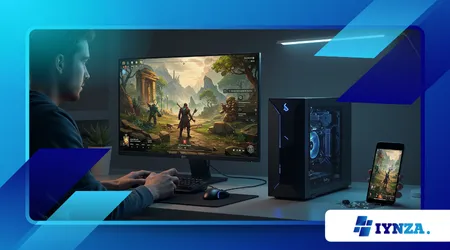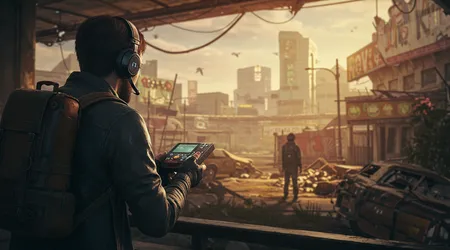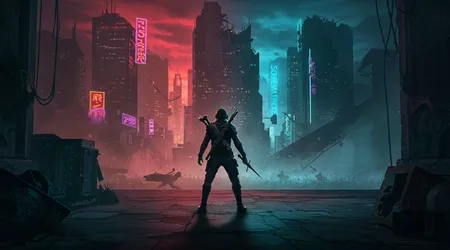The Return of Single-Player: Are Live-Service Games on the Decline?

The return of single-player games in 2025 signals a seismic shift in gaming culture, as players crave immersive, self-contained stories over endless live-service grinds.
Anúncios
Once overshadowed by the allure of recurring revenue models like Fortnite’s battle passes, single-player experiences are reclaiming the spotlight.
This resurgence isn’t just nostalgia; it’s a reaction to player fatigue with always-online titles that often feel incomplete or exploitative.
In this article, we’ll unpack why solo adventures are roaring back, explore whether live-service games are truly declining, and examine what this means for the gaming industry.
From standout releases to evolving player expectations, we’ll dive deep into this pivotal moment. Why are gamers turning away from multiplayer chaos to embrace crafted narratives?
The Resurgence of Single-Player Games
Solo gaming is experiencing a renaissance, driven by titles delivering polished, complete experiences. Black Myth: Wukong, a 2024 hit, captivated millions with its rich mythology and tight gameplay.
Unlike live-service games requiring constant updates, it offered a finite, satisfying journey. Players praised its depth, proving single-player games can rival multiplayer giants in engagement.
This return of single-player isn’t just about one game. Titles like Hades II and the upcoming Judas by Ken Levine prioritize narrative depth over online ecosystems.
++ Nintendo’s Next Console Leak Might Be Real – Here’s What We Know
These games respect players’ time, offering closure without demanding daily logins. Gamers, burned by grind-heavy titles, are flocking to these self-contained worlds.
The appeal lies in control. Single-player games let players dictate pace and immersion, free from server issues or toxic lobbies.
In 2025, studios like Larian are doubling down on this, with Swen Vincke championing artistic, story-driven projects. This shift reflects a hunger for meaningful experiences over repetitive loops.

The Cracks in Live-Service Dominance
Live-service games, once industry darlings, are showing vulnerabilities. Newzoo’s 2025 PC & Console Gaming Report reveals only 12% of playtime came from new titles in 2024.
Established giants like Fortnite and Call of Duty: Warzone dominated, leaving new live-service games struggling to gain traction. This saturation is choking innovation.
High-profile failures underscore this. Concord, a 2024 multiplayer title, flopped despite heavy investment, while Black Myth: Wukong soared.
Players are tired of buggy launches and pay-to-win mechanics. The return of single-player games highlights a rejection of these exploitative models, favoring quality over quantity.
Also read: 2025’s Most Controversial Game Launch – And Why It Still Sold Millions
Moreover, live-service games demand constant engagement, creating FOMO (fear of missing out).
This exhausts players, as noted by IGN in 2023, when live-service fatigue first surfaced. In 2025, gamers are prioritizing experiences that don’t feel like second jobs, pushing studios to rethink strategies.
Why Players Are Embracing Solo Adventures
Gamers crave stories that resonate. Single-player titles like The Last of Us Part I (remastered in 2025) deliver emotional depth multiplayer rarely matches.
These games feel like novels, with arcs that linger long after the credits roll. Players want that intimacy.
The return of single-player also ties to accessibility. Not everyone has reliable internet or time for team-based matches.
Solo games cater to diverse schedules, letting players pause and return without penalty. This flexibility is a balm for today’s busy lifestyles.
Read more: The Unreal Engine 6 Reveal: What It Means for the Future of Gaming
Economic factors play a role too. Live-service games often nickel-and-dime players with microtransactions.
In contrast, single-player titles like Elden Ring’s Shadow of the Erdtree DLC offer expansive content for a one-time purchase, feeling like a better value proposition in 2025’s economy.
The Industry’s Pivot: A New Balance?
Studios are noticing the return of single-player demand. Larian’s success with Baldur’s Gate 3 inspired a wave of narrative-focused projects.
Even AAA giants like Ubisoft are scaling back live-service ambitions, with reports from PC Gamer suggesting a pivot toward hybrid models blending solo and multiplayer elements.
Indie studios are leading the charge. Games like Thank Goodness You’re Here show small teams can deliver big impact with tight, story-driven experiences.
These titles thrive on platforms like Steam, where players increasingly favor originality over recycled live-service formulas.
Yet, live-service games aren’t dead. Fortnite and League of Legends still rake in billions, per Newzoo data. The challenge for studios is balancing these cash cows with innovative single-player offerings. Hybrid approaches, like Destiny 2’s story expansions, could bridge the gap in 2025.
The Role of Community and Technology

Community feedback is fueling the return of single-player. Platforms like Reddit amplify player voices, with posts like u/Turbostrider27’s 2025 thread decrying forced live-service pivots.
Gamers demand authenticity, and studios are listening, crafting experiences that prioritize player satisfaction over monetization.
Technology also plays a part. Advanced AI and rendering tech, like Unreal Engine 5, make single-player worlds more immersive. Games like Senua’s Saga: Hellblade II showcase how tech can elevate storytelling, drawing players to solo experiences that feel cinematic and personal.
Player agency is another driver. Single-player games empower choices think branching narratives in Cyberpunk 2077’s Phantom Liberty.
Unlike live-service titles, where updates dictate play, solo games let players shape their journey, resonating deeply in an era craving individuality.
A Table of Trends: Single-Player vs. Live-Service in 2025
| Aspect | Single-Player Games | Live-Service Games |
|---|---|---|
| Player Engagement | Deep, story-driven, finite experiences | Ongoing, grind-heavy, community-driven |
| Revenue Model | One-time purchase, optional DLC | Microtransactions, subscriptions, battle passes |
| Examples (2024-2025) | Black Myth: Wukong, Hades II, Judas | Fortnite, Call of Duty: Warzone, Concord |
| Playtime Share (2024) | 12% from new titles (Newzoo) | 80% from established titles (Newzoo) |
| Player Sentiment | Craving polish, tired of FOMO | Fatigue from bugs, repetitive content |
The Future: A Coexistence or a Reckoning?
Could the return of single-player signal a broader industry reckoning? Live-service games aren’t vanishing Fortnite’s $26 billion revenue proves their staying power.
Yet, player burnout is real, and studios ignoring this risk irrelevance. The future may lie in coexistence, with single-player and live-service titles catering to distinct audiences.
Imagine gaming as a buffet: single-player games are the hearty, crafted dishes you savor slowly, while live-service titles are the endless dessert bar tempting but overwhelming if overindulged.
In 2025, players are choosing the main course, seeking substance over sugar.
Indie studios will likely lead innovation. Titles like Vampire Survivors show how small teams can craft addictive yet contained experiences.
Meanwhile, AAA developers must adapt, possibly integrating single-player depth into live-service frameworks, as seen in Assassin’s Creed Infinity’s rumored hybrid approach.
The return of single-player isn’t just a trend; it’s a statement. Gamers want stories, not chores. Studios that listen will thrive, while those chasing live-service gold may falter. The industry stands at a crossroads will it embrace this shift or cling to old models?
Conclusion: A New Chapter for Gaming
The return of single-player games in 2025 marks a pivotal moment, reflecting a broader desire for meaningful, self-contained experiences.
Players are voting with their time, choosing polished narratives over endless grinds. While live-service giants like Fortnite remain dominant, their cracks player fatigue, failed launches, and oversaturation are undeniable.
Studios must adapt, balancing innovation with player demands. The industry’s future hinges on this equilibrium, with single-player titles leading the charge for authenticity.
As gamers, we’re not just playing we’re shaping the stories we want told. What’s your next adventure: a solo epic or another battle pass?
Frequently Asked Questions
Why are single-player games making a comeback in 2025?
Players seek polished, narrative-driven experiences free from microtransactions and FOMO, with titles like Black Myth: Wukong proving solo games can captivate.
Are live-service games dying?
No, but they’re struggling. Newzoo’s 2025 report shows 80% of playtime goes to established titles, leaving new live-service games fighting for scraps.
How can studios balance single-player and live-service models?
Hybrid approaches, like Destiny 2’s story-driven expansions, blend narrative depth with ongoing engagement, offering players choice without endless grinds.
What role does community feedback play?
Platforms like Reddit amplify player voices, pushing studios to prioritize authenticity over monetization, as seen in backlash against forced live-service pivots.
